Bewise Inc. www.tool-tool.com Reference source from the internet.
Mechanical Engineering is an engineering discipline that involves the application of principles of physics for analysis, design, manufacturing, and maintenance of mechanical systems. It requires a solid understanding of key concepts including mechanics, kinematics, thermodynamics and energy. Mechanical engineers use these principles and others in the design and analysis of motor vehicles, aircraft, heating & cooling systems, watercraft, manufacturing plants, industrial equipment and machinery, medical devices and more.
[edit] Development
Mechanical engineering could be found in many ancient and medieval societies throughout the globe. In ancient Greece, the works of Archimedes (287 BC–212 BC), and Heron of Alexandria (10–70 AD) deeply influenced mechanics in the Western tradition. In ancient China, there were also many notable figures, such as Zhang Heng (78–139 AD) and Ma Jun (200–265 AD). The medieval Chinese horologist and engineer Su Song (1020–1101 AD) incorporated an escapement mechanism into his astronomical clock tower two centuries before any escapement could be found in clocks of medieval Europe, as well as the world's first known endless power-transmitting chain drive.[1]
During the early 19th century in Britain, the development of machine-tools led mechanical engineering to develop as a separate field within engineering, providing manufacturing machines and the engines to power them.[2] The first British professional society of mechanical engineers was formed in 1847, making mechanical engineering the second-oldest branch of engineering behind civil, formed 30 years earlier.[3] In the United States, the first mechanical engineering professional society was formed in 1880, making it the third oldest type of engineering behind civil (1852) and mining & metallurgical (1871).[4] The first schools in the United States to offer an engineering education were the United States Military Academy in 1817, an institution now known as Norwich University in 1819, and Rensselaer Polytechnic Institute in 1825. Education in mechanical engineering has historically been based on a strong foundation in mathematics and science; this is followed by courses emphasizing the application of this knowledge and studies in the social sciences and humanities to give the engineer a broader education.[5]
[edit] Education
Degrees in mechanical engineering are offered at universities in most industrialized nations. In China, India, North America and elsewhere, mechanical engineering programs typically take 4 to 5 years and result in a Bachelor of Science (BSc), Bachelor of Technology (BTech), Bachelor of Engineering (B.E), or a Bachelor of Applied Science (B.A.Sc.) with emphasis in mechanical engineering. In Spain, Portugal and most of South America where the (BSc) or (BTech) programs have not been adopted, the formal name for the degree is "Mechanical Engineer" and the course work is based on 5–6 years of training.
In the U.S., most undergraduate Mechanical Engineering programs are accredited by the Accreditation Board for Engineering and Technology (ABET) to ensure similar course requirements and standards between universities. The ABET web site lists 276 accredited Mechanical Engineering programs as of June 19, 2006.[6] Mechanical Engineering programs in Canada are accredited by the Canadian Engineering Accreditation Board (CEAB),[7] and most other countries offering engineering degrees have similar accreditation societies.
Some Mechanical Engineers go on to pursue a postgraduate degree such as a Master of Engineering, Master of Science, Master of Engineering Management (MEng.Mgt, MEM), a Doctor of Philosophy in Engineering (EngD, PhD) or an Engineer's degree. The Master's and Engineer's degrees may consist of either research, coursework or a mixture of the two. The Doctor of Philosophy consists of a significant research component and is often viewed as the entry point to academia.[8]
[edit] Coursework
Mechanical engineering programs generally cover the same fundamental subjects, to meet standards set by each country's accreditation society. Engineering programs in the U.S., for instance, are required by ABET to show that their students can "work professionally in both thermal and mechanical systems areas."[9] This is to ensure a minimum level of competence among graduating engineers and to inspire confidence in the engineering profession as a whole. The specific courses required to graduate, however, may differ from program to program. Universities will often combine multiple subjects into a single class or split a subject into multiple classes, depending on the faculty available and the university's major area(s) of research. Fundamental subjects of mechanical engineering usually include:
Mechanical engineers are also expected to understand and be able to apply basic concepts from chemistry, chemical engineering, electrical engineering, civil engineering, and physics. Most mechanical engineering programs include several semesters of calculus, as well as advanced mathematical concepts which may include differential equations and partial differential equations, linear and modern algebra, and differential geometry, among others.
In addition to the core mechanical engineering curriculum, many mechanical engineering programs offer more specialized programs and classes, such as mechatronics / robotics, transport and logistics, cryogenics, fuel technology, automotive engineering, biomechanics, vibration, optics and others, if a separate department does not exist for these subjects.[12]
Most mechanical engineering programs also require varying amounts of research or community projects to gain practical problem-solving experience. Mechanical engineering students usually hold one or more internships while studying, though this is not typically mandated by the university.
[edit] License
Engineers may seek license by a state, provincial, or national government. The purpose of this process is to ensure that engineers possess the necessary technical knowledge, real-world experience, and knowledge of the local legal system to practice engineering at a professional level. Once certified, the engineer is given the title of Professional Engineer (in the United States, Canada, Japan, South Korea and South Africa), Chartered Engineer (in the UK, Ireland, India and Zimbabwe), Chartered Professional Engineer (in Australia and New Zealand) or European Engineer (much of the European Union). Not all mechanical engineers choose to become licensed; those that do can be distinguished as Chartered or Professional Engineers by the post-nominal title P.E., P. Eng., or C.Eng., as in: Ryan Jones, P.Eng.
In the U.S., to become a licensed Professional Engineer, an Engineer must pass the comprehensive FE (Fundamentals of Engineering) exam, work a given number of years as an Engineering Intern (EI) or Engineer-in-Training (EIT), and finally pass the "Principles and Practice" or PE (Practicing Engineer or Professional Engineer) exam.
In the United States, the requirements and steps of this process are set forth by the National Council of Examiners for Engineering and Surveying (NCEES), a national non-profit representing all states. In the UK, current graduates require a MSc, MEng or BEng (Hons) in order to become chartered through the Institution of Mechanical Engineers.
In most modern countries, certain engineering tasks, such as the design of bridges, electric power plants, and chemical plants, must be approved by a Professional Engineer or a Chartered Engineer. "Only a licensed engineer, for instance, may prepare, sign, seal and submit engineering plans and drawings to an public authority for approval, or to seal engineering work for public and private clients."[13] This requirement can be written into state and provincial legislation, such as Quebec's Engineer Act.[14] In other countries, such as Australia, no such legislation exists; however, practically all certifying bodies maintain a code of ethics independent of legislation that they expect all members to abide by or risk expulsion.[15]
- Further information: FE Exam, Professional Engineer, Chartered Engineer, Incorporated Engineer, and Washington Accord
[edit] Salaries and workforce statistics
The total number of engineers employed in the U.S. in 2004 was roughly 1.4 million. Of these, 226,000 were mechanical engineers (15.6%), second only to civil engineers in size at 237,000 (16.4%). The total number of mechanical engineering jobs in 2004 was projected to grow 9 to 17%, with average starting salaries being $50,236 with a bachelor's degree, $59,880 with a master's degree, and $68,299 with a doctorate degree. This places mechanical engineering at 8th of 14 among engineering bachelors degrees, 4th of 11 among masters degrees, and 6th of 7 among doctorate degrees in average annual salary.[16] The median annual earning of mechanical engineers in the U.S. workforce is roughly $63,000. This number is highest when working for the government ($72,500), and lowest when doing general purpose machinery manufacturing in the private sector ($55,850).[17]
Canadian engineers make an average of $29.83 per hour with 4% unemployed. The average for all occupations is $18.07 per hour with 7% unemployed. Twelve percent of these engineers are self-employed, and since 1997 the proportion of female engineers has risen to 6%.[18]
[edit] Modern Tools
Many mechanical engineering companies, especially those in industrialized nations, have begun to incorporate Computer-aided engineering (CAE) programs into their existing design and analysis processes. For instance, companies may use Computer-aided design (CAD) for design of products in 2D and 3D. This method has many benefits, including easier and more exhaustive visualization of products, the ability to create virtual assemblies of parts, and the ease of use in designing mating interfaces and tolerances.
Other CAE programs commonly used by mechanical engineers include product lifecycle management(PLM) tools and analysis tools used to perform complex simulations. Analysis tools may be used to predict product response to expected loads, including fatigue life and manufacturability. These tools include Finite element analysis (FEA), Computational fluid dynamics (CFD), and Computer-aided manufacturing (CAM).
Using CAE programs, a mechanical design team can quickly and cheaply iterate the design process to develop a product that better meets cost, performance, and other constraints. No physical prototype need be created until the design nears completion, allowing hundreds or thousands of designs to be evaluated, instead of a relative few. In addition, CAE analysis programs can model complicated physical phenomena which cannot be solved by hand, such as viscoelasticity, complex contact between mating parts, or non-Newtonian flows
As mechanical engineering begins to merge with other disciplines, as seen in mechatronics, Multidisciplinary design optimization (MDO) is being used with other CAE programs to automate and improve the iterative design process. MDO tools wrap around existing CAE processes, allowing product evaluation to continue even after the analyst goes home for the day. They also utilize sophisticated optimization algorithms to more intelligently explore possible designs, often finding better, innovative solutions to difficult multidisciplinary design problems.
[edit] Subdisciplines
The field of mechanical engineering can be thought of as a collection of many mechanical disciplines. Several of these subdisciplines which are typically taught at the undergraduate level are listed below, with a brief explanation and the most common application of each. Some of these subdisciplines are unique to mechanical engineering, while others are a combination of mechanical engineering and one or more other disciplines. Most work that a mechanical engineer does uses skills and techniques from several of these subdisciplines, as well as specialized subdisciplines. Specialized subdisciplines, as used in this article, are usually the subject of graduate studies or on-the-job training more than undergraduate research. Several specialized subdisciplines are discussed at the end of this section.
[
Mechanics is, in the most general sense, the study of forces and their effect upon matter. Typically, engineering mechanics is used to analyze and predict the acceleration and deformation (both elastic and plastic) of objects under known forces (also called loads) or stresses. Subdisciplines of mechanics include
Mechanical engineers typically use mechanics in the design or analysis phases of engineering. If the engineering project were the design of a vehicle, statics might be employed to design the frame of the vehicle, in order to evaluate where the stresses will be most intense. Dynamics might be used when designing the car's engine, to evaluate the forces in the pistons and cams as the engine cycles. Mechanics of materials might be used to choose appropriate materials for the frame and engine. Fluid mechanics might be used to design a ventilation system for the vehicle (see HVAC), or to design the intake system for the engine.
[edit] Kinematics
-
Kinematics is the study of the motion of bodies (objects) and systems (groups of objects), while ignoring the forces that cause the motion. The movement of a crane and the oscillations of a piston in an engine are both simple kinematic systems. The crane is a type of open kinematic chain, while the piston is part of a closed four bar linkage.
Mechanical engineers typically use kinematics in the design and analysis of mechanisms. Kinematics can be used to find the possible range of motion for a given mechanism, or, working in reverse, can be used to design a mechanism that has a desired range of motion.
[edit] Mechatronics and robotics
-
Main article: Mechatronics
-
Mechatronics is an interdisciplinary branch of mechanical engineering, electrical engineering and software engineering that is concerned with integrating electrical and mechanical engineering to create hybrid systems. In this way, machines can be automated through the use of electric motors, servo-mechanisms, and other electrical systems in conjunction with special software. A common example of a mechatronics system is a CD-ROM drive. Mechanical systems open and close the drive, spin the CD and move the laser, while an optical system reads the data on the CD and converts it to bits. Integrated software controls the process and communicates the contents of the CD to the computer.
Mechatronics is currently used in the following areas of engineering, among others:

Industrial robots perform repetitive tasks, such as assembling
vehicles.
Robotics is the application of mechatronics to create robots, which perform tasks that are dangerous, unpleasant, or repetitive. These robots may be of any shape and size, but all are preprogrammed and interact physically with the world. To create a robot, an engineer typically employs kinematics (to determine the robot's range of motion) and mechanics (to determine the stresses within the robot).
Robots are used extensively in Industrial engineering. They allow businesses to save money on labor and perform tasks that are either too dangerous or too precise for humans to perform them economically. Many companies employ assembly lines of robots, and some factories are so robotized that they can run by themselves. Outside the factory, robots have been employed in bomb disposal, space exploration, and many other fields. Robots are also sold for various residential applications.
[edit] Structural analysis
-
-
Structural analysis is the branch of mechanical engineering (and also civil engineering) devoted to examining why and how objects fail. Structural failures occur in two general modes: static failure, and fatigue failure. Static structural failure occurs when, upon being loaded (having a force applied) the object being analyzed either breaks or is deformed plastically, depending on the criterion for failure. Fatigue failure occurs when an object fails after a number of repeated loading and unloading cycles. Fatigue failure occurs because of imperfections in the object: a microscopic crack on the surface of the object, for instance, will grow slightly with each cycle (propagation) until the crack is large enough to cause ultimate failure.
Failure is not simply defined as when a part breaks, however; it is defined as when a part does not operate as intended. Some systems, such as the perforated top sections of some plastic bags, are designed to break. If these systems do not break, failure analysis might be employed to determine the cause.
Structural analysis is often used by mechanical engineers after a failure has occurred, or when designing to prevent failure. Engineers may use various books and handbooks such as those published by ASM[20] to aid them in determining the type of failure and possible causes.
Structural analysis may be used in the office when designing parts, in the field to analyze failed parts, or in laboratories where parts might undergo controlled failure tests.
Thermodynamics is an applied science used in several branches of engineering, including Mechanical and Chemical Engineering. At its simplest, thermodynamics is the study of energy, its use and transformation through a system. Typically, engineering thermodynamics is concerned with changing energy from one form to another. As an example, automotive engines convert chemical energy (enthalpy) from the fuel into heat, and then into mechanical work that eventually turns the wheels.
Thermodynamics principles are used by mechanical engineers in the fields of heat transfer, thermofluids, and energy conversion. Mechanical engineers use thermo-science to design engines and power plants, heating, ventilation, and air-conditioning (HVAC) systems, heat exchangers, heat sinks, radiators, refrigeration, insulation, and others.
[edit] Drafting
-
-
Drafting or technical drawing is the means by which mechanical engineers create instructions for manufacturing parts. A technical drawing can be a computer model or hand-drawn schematic showing all the dimensions necessary to manufacture a part, as well as assembly notes, a list of required materials, and other pertinent information. A U.S. mechanical engineer or skilled worker who creates technical drawings may be referred to as a drafter or draftsman (or, in a more politically correct way, draftsperson). Drafting has historically been a two-dimensional process, but recent Computer-Aided Designing (CAD) programs have begun to allow the designer to create in three dimensions.
Instructions for manufacturing a part must be fed to the necessary machinery, either manually, through programmed instructions, or through the use of a Computer-Aided Manufacturing (CAM) or combined CAD/CAM program. Optionally, an engineer may also manually manufacture a part using the technical drawings, but this is becoming an increasing rarity, with the advent of CNC (Computer Numerically Controlled) manufacturing. Engineers primarily manually manufacture parts in the areas of applied spray coatings, finishes, and other processes that cannot economically or practically be done by a machine.
Drafting is used in nearly every subdiscipline of mechanical engineering, and by many other branches of engineering and architecture. Three-dimensional models created using CAD software are also commonly used in Finite element analysis (FEA) and Computational fluid dynamics (CFD).
[edit] Specialized subdisciplines
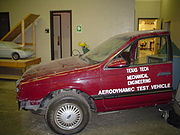
An aerodynamic test vehicle used by mechanical engineers.
The following is a list of some additional subdisciplines and topics within mechanical engineering. These topics may be considered specialized because they are not typically part of undergraduate mechanical engineering requirements, or require training beyond an undergraduate level to be useful.
[edit] Frontiers of research
Mechanical engineers are constantly pushing the boundaries of what is physically possible in order to produce safer, cheaper, and more efficient machines and mechanical systems. Some technologies at the cutting edge of mechanical engineering are listed below (see also exploratory engineering).
[edit] Composites

Composite cloth consisting of woven carbon fiber.
-
Composites or composite materials are a combination of materials which provide different physical characteristics than either material separately. Composite material research within mechanical engineering typically focuses on designing (and, subsequently, finding applications for) stronger or more rigid materials while attempting to reduce weight, suceptability to corrosion, and other undesirable factors. Carbon fiber reinforced composites, for instance, have been used in such diverse applications as spacecraft and fishing rods.
[edit] Mechatronics
-
Main article: Mechatronics
Mechatronics is the synergistic combination of mechanical engineering, electronic engineering, and software engineering. The purpose of this interdisciplinary engineering field is the study of automata from an engineering perspective and serves the purposes of controlling advanced hybrid systems.
[edit] Nanotechnology
-
Main article: Nanotechnology
At the smallest scales, mechanical engineering becomes nanotechnology and molecular engineering—one speculative goal of which is to create a molecular assembler to build molecules and materials via mechanosynthesis. For now this goal remains within exploratory engineering.
歡迎來到Bewise Inc.的世界,首先恭喜您來到這接受新的資訊讓產業更有競爭力,我們是提供專業刀具製造商,應對客戶高品質的刀具需求,我們可以協助客戶滿足您對產業的不同要求,我們有能力達到非常卓越的客戶需求品質,這是現有相關技術無法比擬的,我們成功的滿足了各行各業的要求,包括:精密HSS DIN切削刀具、協助客戶設計刀具流程、DIN or JIS 鎢鋼切削刀具設計、NAS986 NAS965 NAS897 NAS937orNAS907 航太切削刀具,NAS航太刀具設計、超高硬度的切削刀具、BW捨棄式鑽石V卡刀’BW捨棄式金屬圓鋸片、木工捨棄式金屬圓鋸片、PCD木工圓鋸片、醫療配件刀具設計、汽車業刀具設計
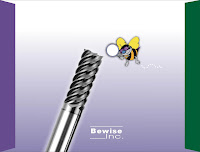


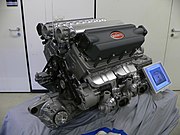


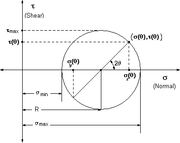




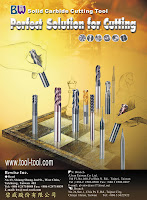



 — the material removal rate in mm3/s, (in3/s),
— the material removal rate in mm3/s, (in3/s), — the cutting speed in m/s, (ft/min),
— the cutting speed in m/s, (ft/min), — the feed in mm, (in),
— the feed in mm, (in), — the depth of cut in mm, (in).
— the depth of cut in mm, (in).

